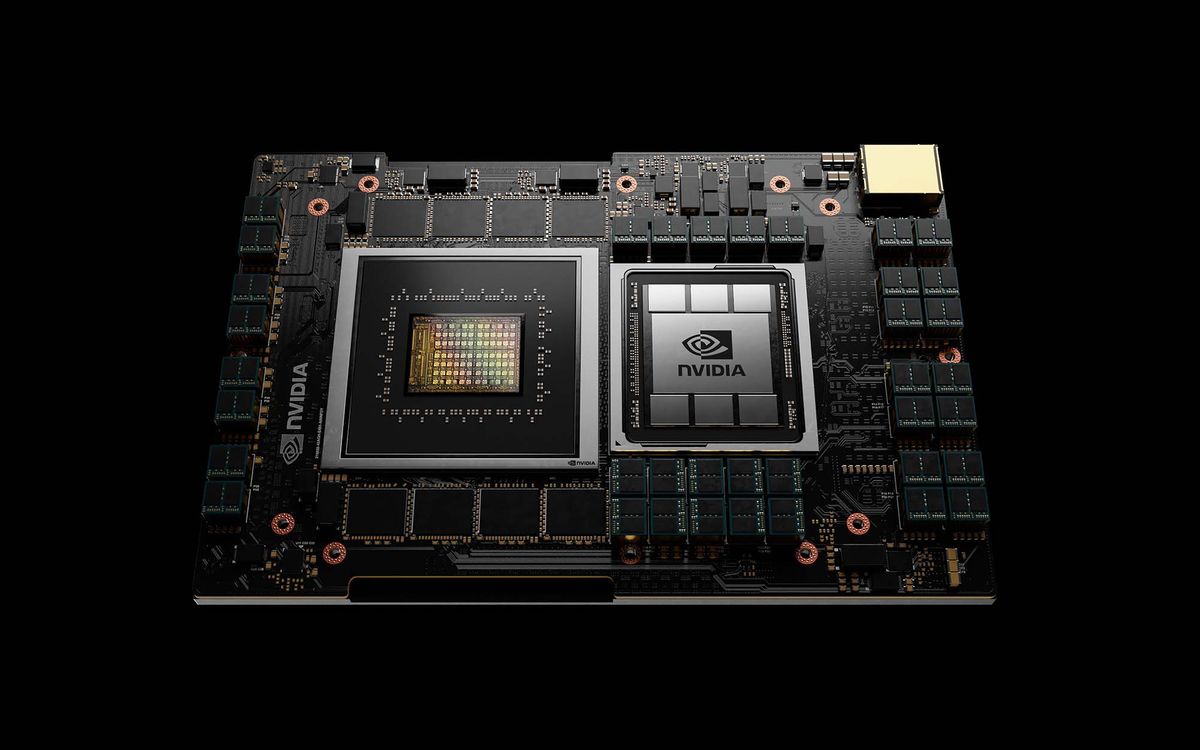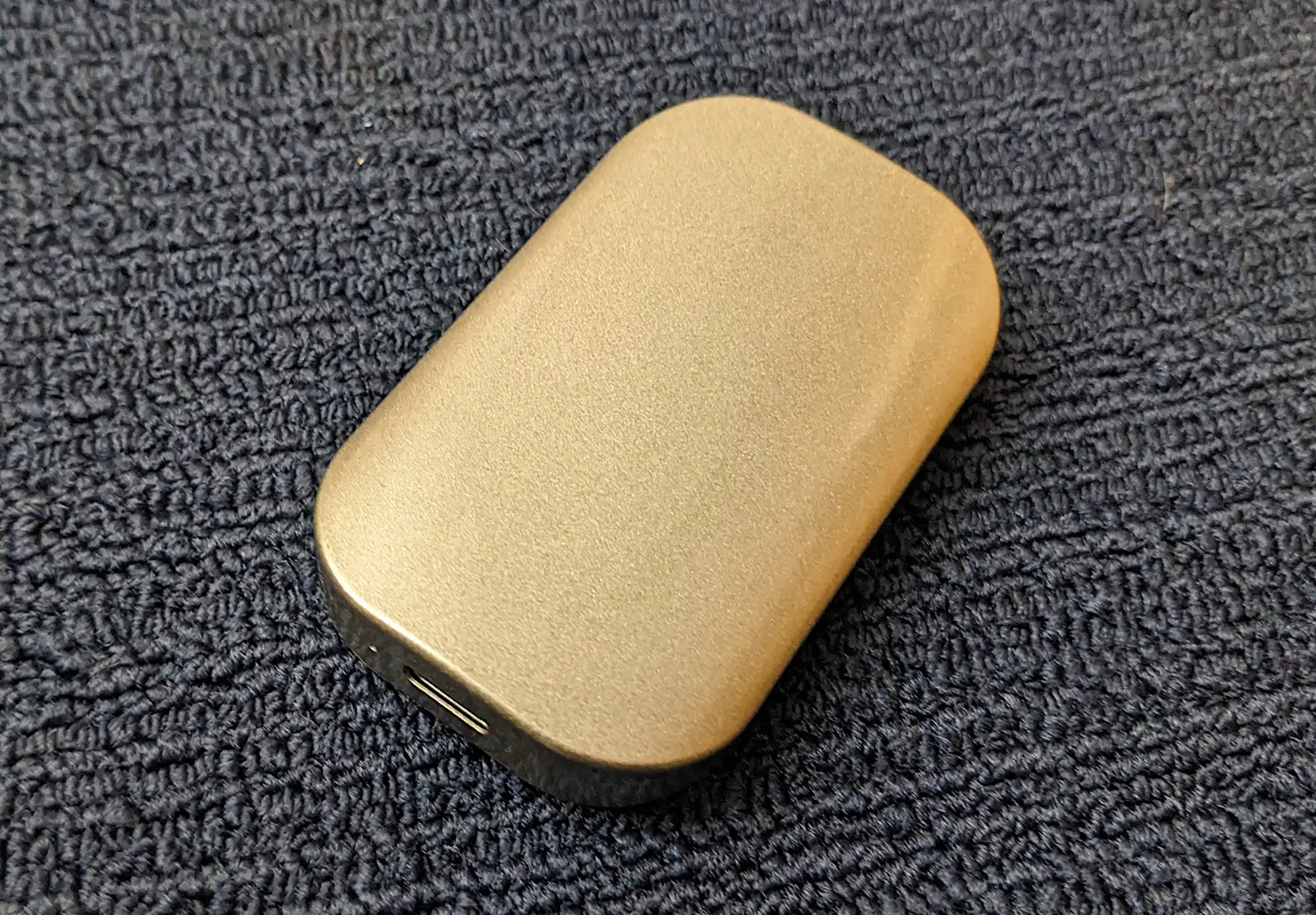Calling all gamers! Whether you consider yourself a serious gamer or someone who’s more casual, we’ve got quite the diverse list below. The best part is that every laptop has been tested by a member of PCWorld and we’ve checked out everything from graphics performance and typing experience to connectivity options and image quality. We’ve also got laptops with both Nvidia and AMD graphics cards, if you’re particular about hardware. These rigs can basically do anything a desktop PC can do.
Why you should trust us: Hey, it’s in our name! PCWorld prides itself on laptop experience and expertise. We’ve been covering PCs since 1983, and we now review more than 70 laptops every year. All of the picks below have been personally tested and vetted by our experts, who’ve applied not only performance benchmarks but rigorous usability standards. We’re also committed to reviewing PC laptops at every price point to help you find a machine that matches your budget.
Razer Blade 14 (2023) – Best gaming laptop
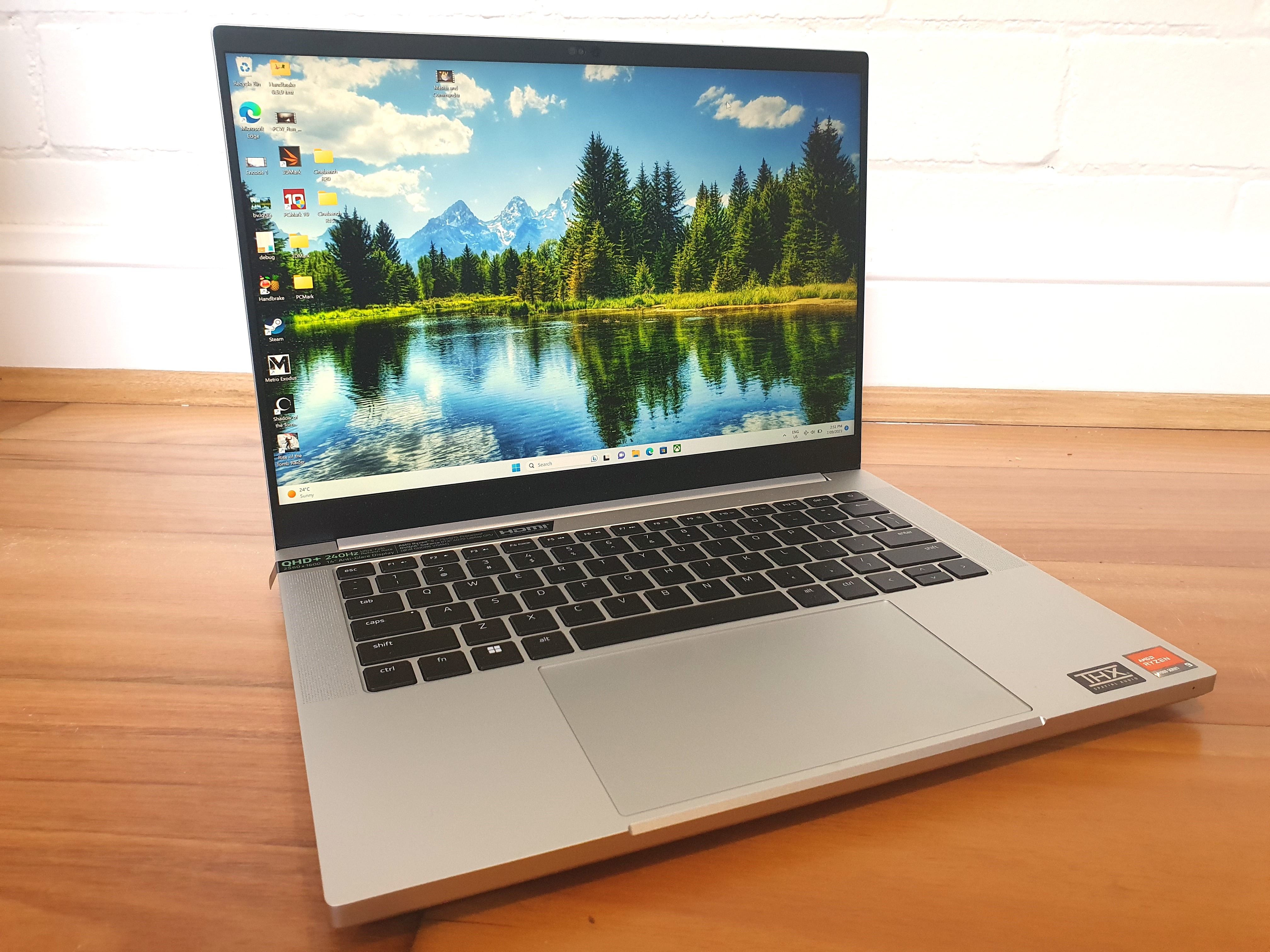
Pros
- The CPU and GPU power is impressive
- The QHD+ display looks superb and is very smooth
- The build quality is exceptional
Cons
- The keys are quick but can sometimes feel a bit mushy
- The audio sounds a bit flat at times
- The top-tier configuration is quite pricey
From the 240Hz refresh rate display to the powerful hardware and portable form factor, the Razer Blade 14 has it all. This beastly machine is rocking an AMD Ryzen 9 7940HS CPU, an Nvidia GeForce RTX 4070 GPU, 32GB of DDR5 RAM, and 1TB of PCIe SSD storage. It should have no problem blazing through most titles and the ample amount of memory should be plenty for your files and games. The 14-inch display has a resolution of 2560×1600, a maximum refresh rate of 240Hz (wow!), and an aspect ratio of 16:10. The laptop itself also weighs a little over four pounds, which is considered lightweight for a gaming laptop. The silver finish is a nice touch, too. The design is more subtle and sophisticated, a welcome departure from the world of garish red accents and big boxy designs.
If you’re on the hunt for a gaming laptop that’s both powerful and portable, then the Razer Blade 14 (2023) is definitely worth considering.
Asus TUF Gaming A16 Advantage Edition – Best budget gaming laptop

Pros
- Outstanding all day battery life
- Gorgeous and smooth FHD+ 16:10 display
- Robust chassis with US military grade certification
Cons
- Left-side port orientation won’t suit left handers
- Keys feel a bit soft and fatiguing
- The 720p HD camera isn’t the best
The Asus TUF Gaming A16 Advantage Edition really stands out from the pack in terms of performance, battery life, price, and so on. As far as budget gaming laptops go, it checks off a lot of boxes. However, one of the more unique things about this sub-$1,000 laptop is its long battery life.
Gaming on a laptop while unplugged can seemingly drain your battery in the blink of an eye. This makes it difficult to game on the go without having to constantly be seeking the nearest outlet. But Asus has done wonders with the battery life in its A16 models and the latest 2023 version is even more efficient. In our battery tests, the A16 ran for a whopping 11.5 hours of continuous use without stopping. Now, intensive gaming will reduce this significantly, but the 90 watt-hour battery should still net you about seven hours of 1080p gaming without having to plug into an AC outlet. That’s way better than most of the competitors on this list.
The Asus TUF Gaming A16 Advantage Edition is no slouch when it comes to performance either. It’s loaded with a Ryzen 7 processor, AMD Radeon RX 7600S graphics card, 16GB of RAM, and a 1TB SSD. Plus, it’s also relatively affordable. All of this makes the A16 an excellent option for 1080p gamers—especially those who want to take their gaming on the go.
MSI Thin GF63 2023 – Most portable gaming laptop
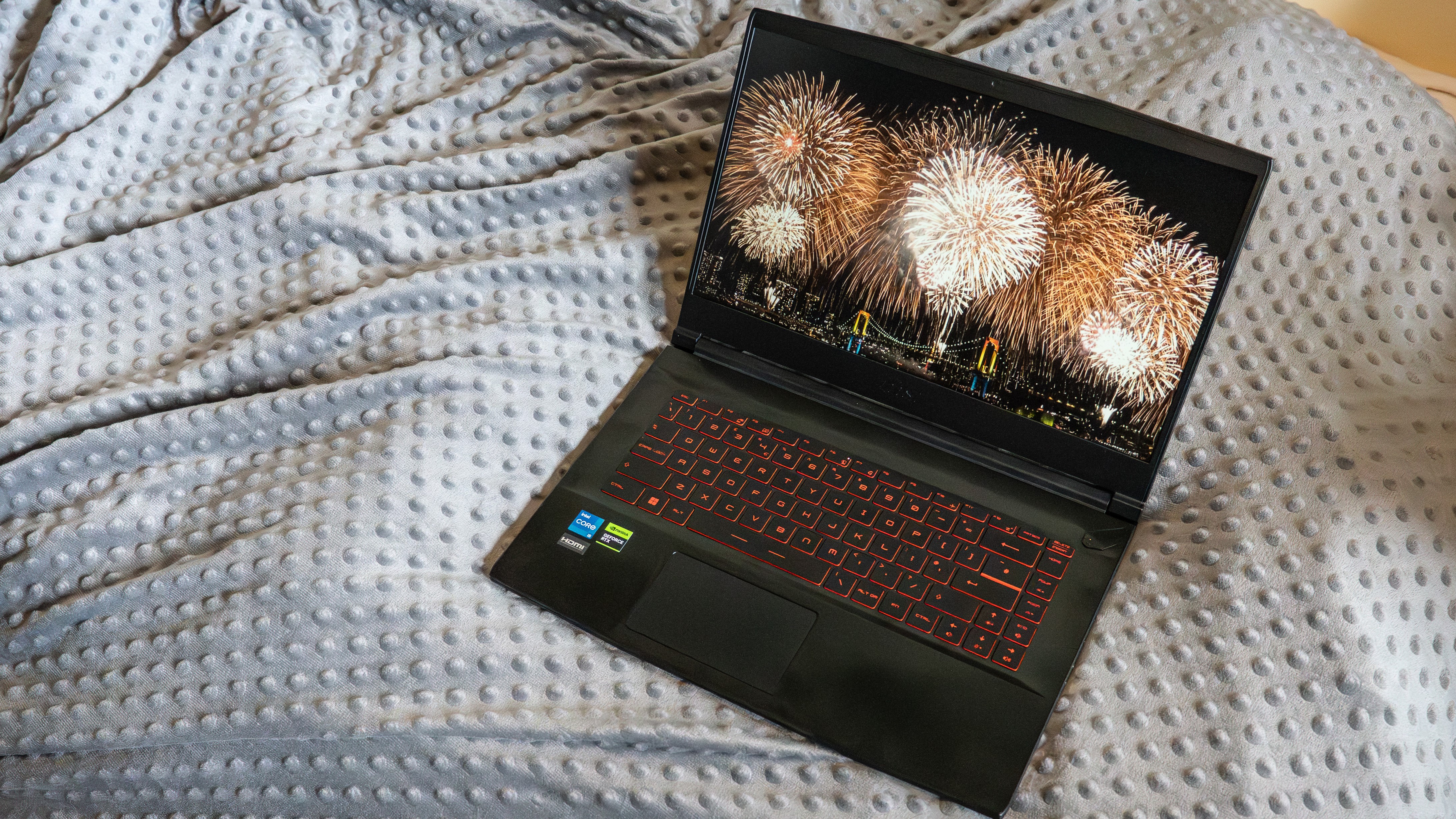
Pros
- Reasonably priced
- Decent 1080p gaming
- Well made
- Attractive red keyboard backlighting
Cons
- Disappointing screen
- Not the most powerful
- Poor battery life
If you’re looking for an affordable laptop that’s lightweight and reasonably powerful, the MSI Thin GF63 is a good option. It weighs just over four pounds, which is light for a gaming laptop. For context, most gaming machines weigh six pounds or more (and sometimes much more). In addition to the lightweight form factor, it also packs a decent amount of power for 1080p gaming.
The MSI Thin GF63 is rocking an Intel Core i7-12650H CPU, an Nvidia GeForce RTX 4050 GPU, 8GB of RAM, and 512GB of SSD storage. Given the hardware, you should be able to run most games on the Medium or High graphics preset. For more graphically demanding games in which every second of response time matters, we’d recommend dialing back the graphics a bit. The 15.6-inch display has a resolution of 1920×1080 and a refresh rate of 144Hz. Although it manages just 300 nits of brightness (which is common for a budget gaming laptop), gameplay should be reasonably smooth thanks to the high refresh rate. It’s not the most vibrant or color-accurate screen we’ve ever seen, but it’s passable, especially for the price.
If you can live with those sacrifices, then the MSI Thin GF63 is a great budget option for most gamers.
Razer Blade 16 – Best 4K gaming laptop
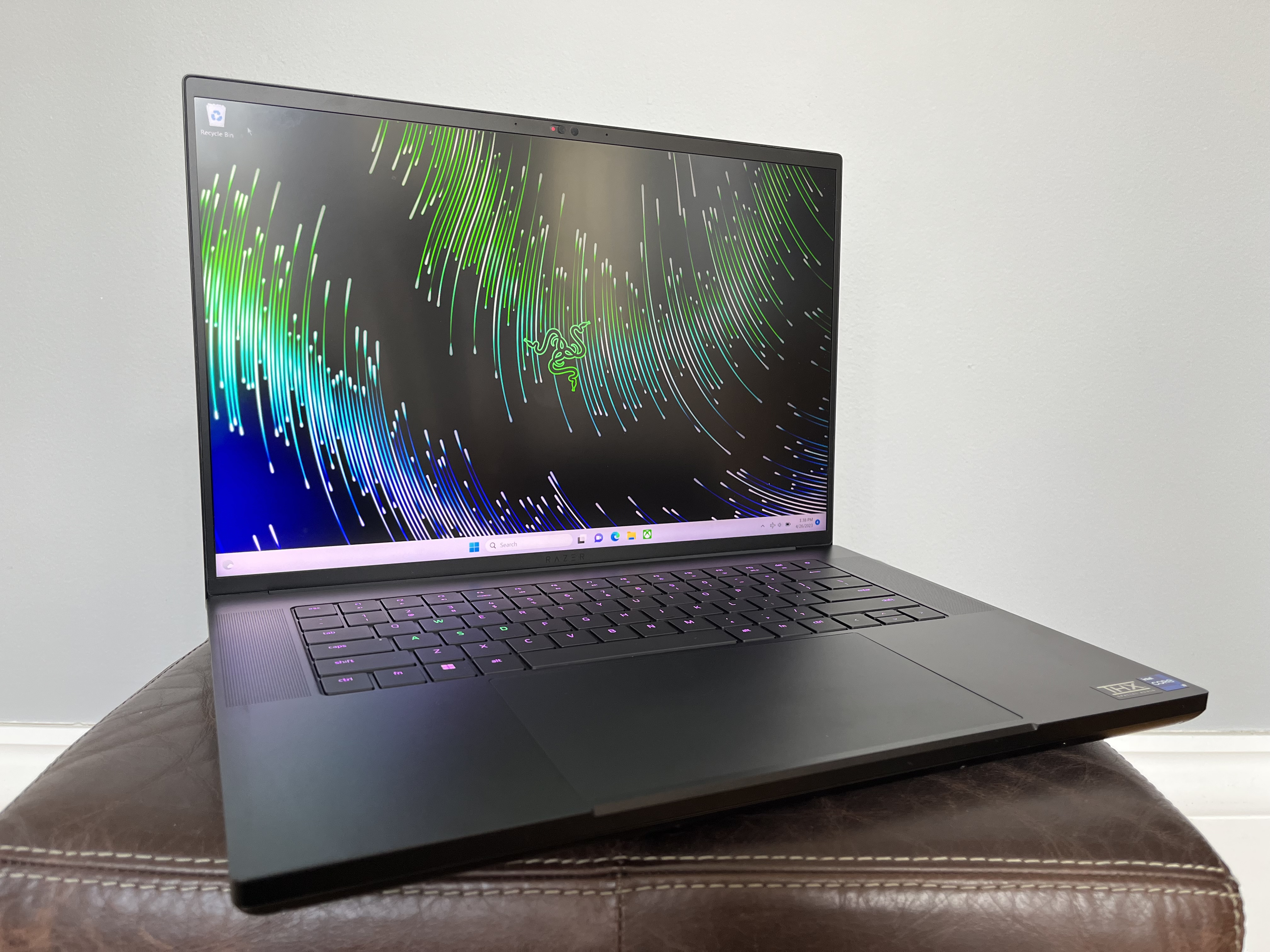
Pros
- Ridiculous 3D performance
- Best-of-both-worlds dual-mode display
- Gorgeous, understated design
Cons
- Switching display modes requires rebooting
- Case is fingerprint magnet
So we need to talk about Razer’s dual-mode display option on the Blade 16. Not only does the mini-LED display act as a native 4K panel with 120Hz refresh rate, but you can switch it to be a 1080p panel at 240Hz as well. It’s the best of both worlds, it’s ludicrous, and we love it. The option to play richly textured games in all of their 4K glory or change it up and play twitchy shooters at a blazing-fast 240Hz is unparalleled in today’s laptops. In 4K mode, the display is rated at 1,000 nits and looks stunning with vibrant and bright colors. Plus, the added vertical space of the 16:10 panel compared to a regular widescreen 16:9 display provides more screen real-estate than one would think.
All of this great display potential requires solid performance features to back it up and the Razer Blade 16 doesn’t disappoint. It’s packing a 13th-gen Core i9-13950HX processor, Nvidia’s flagship RTX 4090 GPU, 32GB of RAM, and a giant 2TB M.2 SSD—those specs will put most gaming desktops to shame. It comes with the classic minimalist design we’re used to seeing from Razer and weighs 5.52 pounds, which is about average for this size gaming laptop. While we can’t say that the price on this laptop is reasonable, at least with these awesome specs, it’s not unreasonable either. Besides, just the 4K dual-mode display on its own makes this laptop stand out from the crowd.
Asus ROG Strix G16 – Best keyboard for gaming

Pros
- The cyberpunk styling looks very appealing
- The laptop makes excellent use of its performance hardware
- The display looks brilliant and handles motion well
Cons
- A cluster of left side ports won’t suit left handers
- Battery life is middling
- There’s more plastic in the chassis than some rivals
Looking like something out of a cyberpunk dream, the Asus ROG Strix G16 comes with all of the futuristic punk aesthetics you could wish for in a gaming laptop. It also sports the best keyboard for gaming we’ve come across on a laptop yet. The full-size keyboard and trackpad are ideal for competitive gaming with programmable hotkeys at the top, a creatively hidden numpad within the trackpad, and springy keys with a generous 2mm of travel.
The Asus ROG Strix G16 doesn’t lack for performance either. It combines the latest-gen Core i7-13650HX processor with a Nvidia RTX 4060 GPU to give you excellent performance. The gorgeous 16-inch 2560 x 1600p 240Hz refresh rate display is another highlight. Sure, the chassis has a bit more plastic than we would like and the battery life sits firmly in the average category, but those quirks are soon forgotten as soon as you boot this neon-lit beauty up.
Acer Predator Helios Neo 16 – Best connectivity features

Pros
- CPU and GPU performance is quite decent for the laptop’s low price
- The keyboard is large, flashy and with an excellent selection of keys
- The port selection is extremely good – it includes two Thunderbolt 4 ports
Cons
- The speaker’s audio is quiet and tuned mostly for the mid and high frequency sounds
- My display’s 165Hz refresh rate didn’t do a lot to prevent stuttering
- The off-center positioning of the trackpad isn’t ideal
Acer’s Predator Helios Neo 16 is not only a mouthful to say, but it’s also a laptop packed with ports and impressive game performance. This affordable option from Acer sports a Intel Core i7-13700HX processor and the new RTX 4060 GPU from Nvidia. That pair means you’ll get solid performance for both productivity and gaming.
We were impressed with the performance, but where this laptop really shines is its incredible array of ports. It has two Thunderbolt 4 ports, three USB-A ports, an HDMI port, Ethernet, Micro SD card slot, and a 3.5 combo jack for audio. Acer did have to make the laptop a bit chunky in order to fit all of this in along with the gamer-centric performance features—14.18 x 11.02 x 1.11-inches and weighing 5.73 pounds. Those dimensions aren’t unheard of in gaming laptops, but it does feel a bit heavy and unwieldy when on the go. However, as far as connectivity and price-to-performance, there aren’t many better options than the Acer Predator Helios Neo 16.
Asus ROG Zephyrus M16 – Best 16-inch gaming laptop
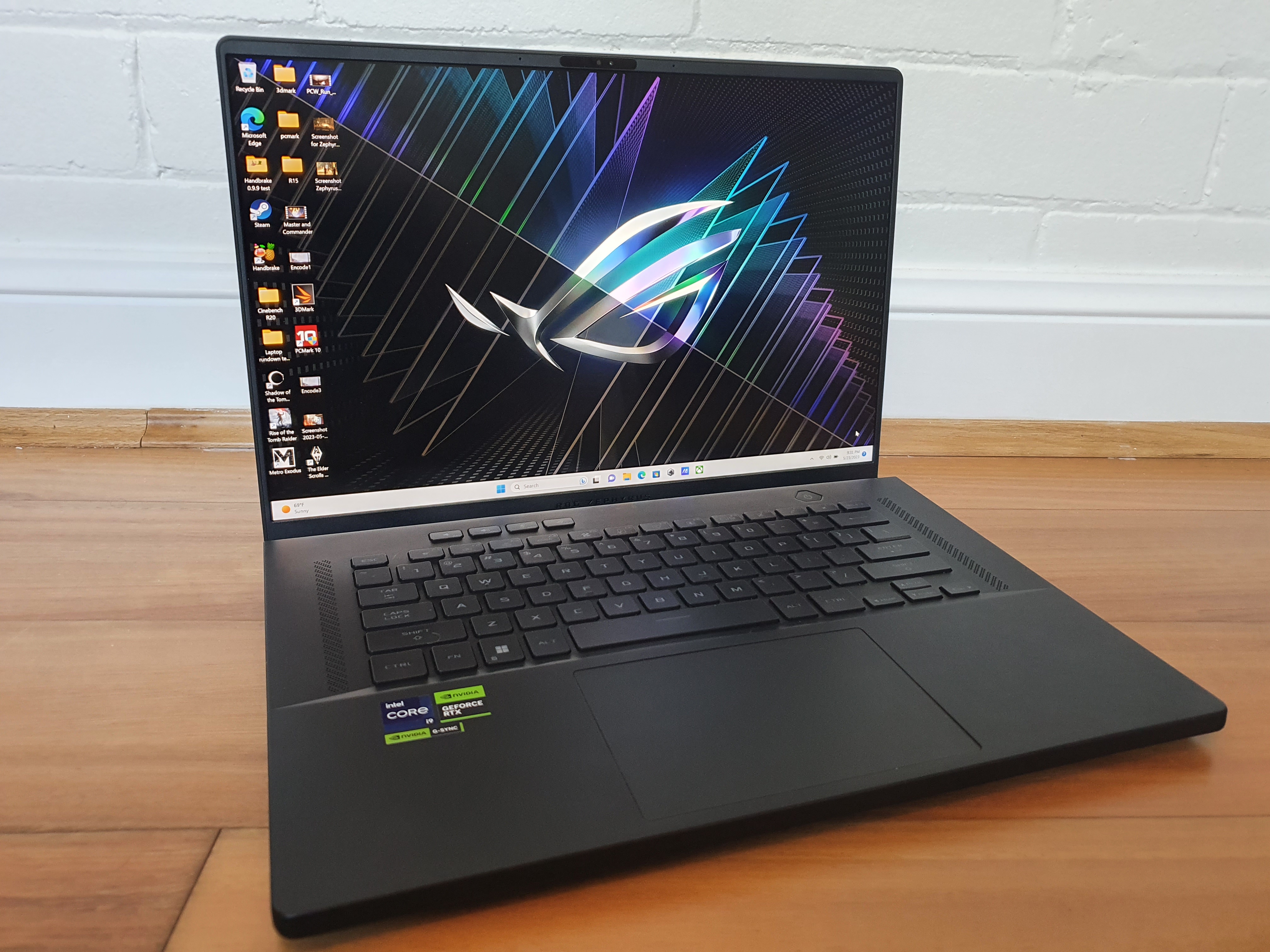
Pros
- Upgrades to the CPU and GPU provide very respectable performance
- The display is both graphically impressive and exceptionally smooth
- Price-wise it beats some competitors
Cons
- The keys feel a bit mushy
- It lacks a dedicated LAN port relying instead on upgrades to wireless connectivity
- The styling is quite modest
In the past, Asus has focused on making its Zephyrus line of laptops thinner and lighter with each iteration. That all changed with the M16, which instead added potent performance upgrades, and we are glad for the change. The M16 sports a powerful Core i9-13900H processor and the new Nvidia RTX 4070 graphics card for a one-two punch that should keep you on top of the latest releases and provide a little bit of future-proofing as well.
Asus has also included a gorgeous 16-inch Mini-LED display in the M16, yet again raising the bar for Zephyrus fans. And even with all of these generous performance upgrades, Asus still managed to keep the Zephyrus M16 at only 0.78-inches thick. It’s packing a bit more weight, though, so it can no longer be considered one of the most portable gaming rigs, but the extra features make it well worth the additional heft.
Acer Predator Triton 17X – Best 17-inch gaming laptop

Pros
- The hardware is extremely powerful – expect high FPS scores
- The QHD+ display is large, produces brilliant color and is remarkably smooth
- The port selection is very decent
Cons
- The styling could be more original and gamer-centric
- It’s quite heavy
- The battery life is short
From the high refresh-rate display and rugged build to the diverse port selection and powerful internals, the Acer Predator Triton 17X has it all. Inside, you’ll find an Intel i9-13900HX CPU, an Nvidia GeForce RTX 4090 GPU, 32GB of DDR5 RAM, and 1TB of PCIe NVMe SSD storage. That’s a beastly amount of power right there. In our graphics testing, it outperformed a number of big players like the Razer Blade 18 and the Alienware X16. The 17-inch display has a resolution of 2560×1600, a refresh rate of 240Hz, and a response time of 3ms. According to our reviewer, the display has “the best contrast” he’s ever seen in a “panel of this size.” Talk about high praise! As for connectivity options, you’re getting two USB-A, two USB-C (Thunderbolt), one HDMI 2.1, one SD card reader, one 3.5mm combo audio jack, one 2.3 Gigabit Ethernet, and one Kensington lock.
If you’re in the market for a 17-inch gaming laptop with fantastic performance, look no further than the Acer Predator Triton 17X.
MSI Titan GT77 HX 13V – Best high-end gaming laptop

Pros
- Excellent mechanical keyboard
- Class-leading Mini-LED display
- Incredible CPU and GPU performance
- 2TB of solid state storage with PCIe Gen5 support
Cons
- Uninspired design
- Short battery life
If you’re on the hunt for the best gaming experience, the MSI Titan GT77 HX 13V is a phenomenally powerful machine. It’s packing an Intel Core i9-13980HX CPU, an Nvidia RTX 4090 GPU, 64GB of RAM, and 2TB of PCIe SSD storage. You can pretty much play any game on the Ultra graphics preset. In our testing, the Titan handled Cyberpunk 2077, one of the most technically demanding games out there right now, like a champ. The laptop also has a mechanical keyboard with Cherry MX switches, which is a major plus for gamers. While performance is no doubt fantastic, the Titan has some tradeoffs you should be aware of: It’s loud, heavy, and astronomically expensive. That said, if you’ve got the budget for it, this thing is an absolute beast.How we test gaming laptops
The PCWorld team puts each and every Windows laptop through a series of benchmarks that test GPU and CPU performance, battery life, and so on. The idea is to push the laptop to its limits and then compare it against others we’ve tested. Below, you’ll find a breakdown of each test and the reasons why we run them:
- PCMark 10: PCMark 10 is how we determine how well the laptop handles lighter tasks like web browsing, word processing, spreadsheets, and so on.
- HandBrake: HandBrake is more intensive than PCMark 10. It basically measures how long a laptop’s CPU takes to encode a beefy 30GB file.
- Cinebench: Cinebench is a brief stress test of the CPU cores. It does this by rendering a 2D scene over a short period of time.
- 3DMark: 3DMark checks if 3D performance remains consistent over time by running graphic-intensive clips.
- Gaming tests: We benchmark each gaming laptop using several titles.
- Video rundown test: To gauge battery life, we loop a 4K video using Windows 10’s Movies & TV app until the laptop dies.
Buying Guide: How to pick the perfect gaming laptop
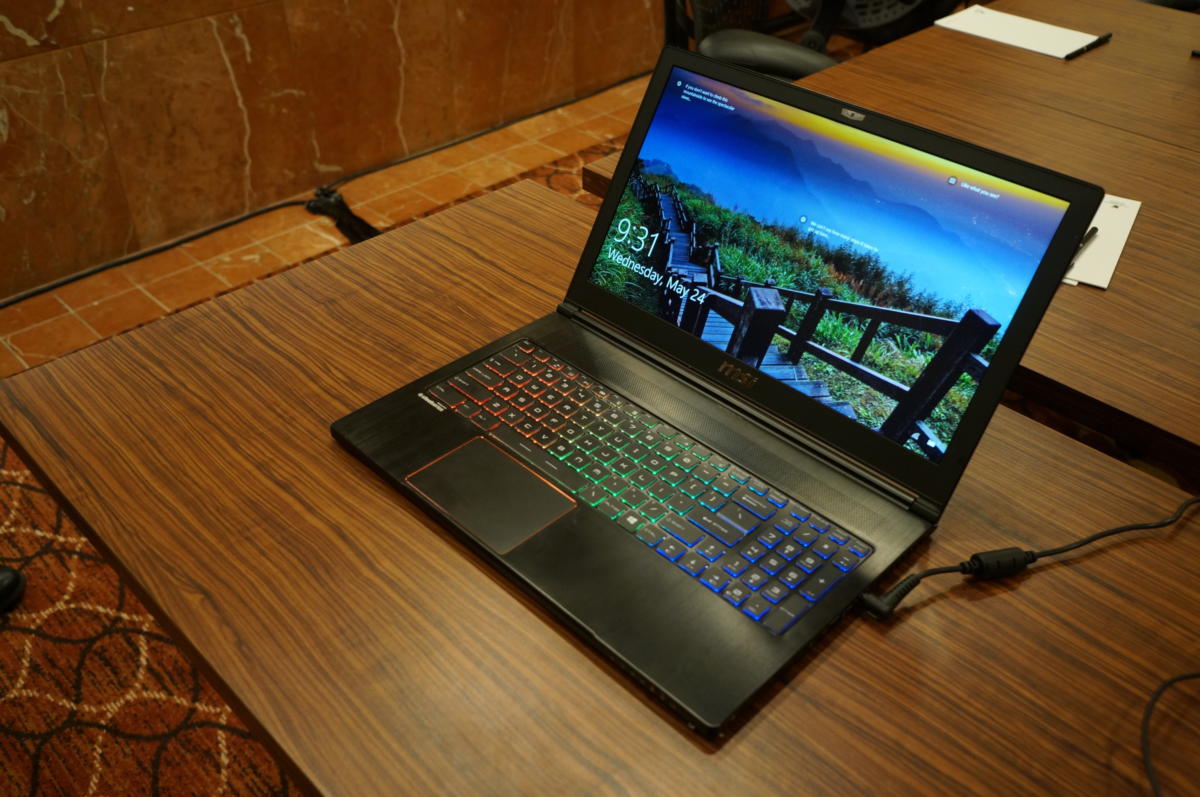
FAQ
What’s the ‘best’ screen for a gaming laptop?
When you buy a gaming laptop, one of the most important decisions you’ll need to make regards the screen. After all, what you get on day one is what you’re stuck with until you junk the device. You could run an external monitor but then, what’s the point of a laptop?
What’s the ‘best’ screen size for a gaming laptop?
The size of the screen dictates the size of the laptop itself, and thus weight. You can’t, for example, get a 17-inch gaming laptop that’s four pounds (although MSI’s excellent GS75 gets awfully damned close at five), so think long and hard about whether you’re willing to take the weight penalty in exchange for the screen real estate.
If the laptop is going to be your only gaming machine, having a 17-inch screen might be ideal. We should also add that a 17.3-inch screen is easier on weaker eyes than a 15.5-inch screen. This is very much a matter of personal preference.
What’s the ‘best’ screen resolution for a gaming laptop?
The buzzword today is “4K.” That high resolution delivers sharper photo viewing and more space for video editing, but that doesn’t mean it’s for everyone. Anything not using the panel’s native resolution of 3840×2180, such as games running at lower-than-4K resolution, won’t look quite as sharp unless you exponentially increase the graphics power of the laptop.
If you’re running at 1920×1080 resolution because your GPU can’t hit 60 fps at 4K, that feature is moot. For many gamers, 1920×1080 (1080p) or 2560×1440 (1440p) is more optimal.
IPS vs. TN vs. OLED: What’s the difference?
The panel technology is also a key feature. IPS (in-plane switching) generally produces much greater color accuracy and superior off-axis viewing, but tends to lag in response times, which can lead to blurring. TN (twisted nematic) panels can offer far higher refresh rates and usually better response times than IPS, but can look washed out or just blah.
A middle-ground technology that’s appearing more often is VA (vertical alignment). VA is sometimes alternately referred to as “wide viewing angle” technology. (Many assume this to spec to be IPS, but it’s not). In our experience, we’ve found VA panels to run the gamut from being worthy competitors to IPS to being worse than the better TN panels.
Generally, if color accuracy is important, go IPS (a trademark of Sharp), and if you want the fastest response times go for a gaming-oriented TN panel. With the variability of VA, we recommend you check feedback from reviewers and users of a particular model.
The wildcard in all this is OLED. OLED-based panels have been used in phones for years but have recently migrated to larger screens in laptops. IPS, TN, and VA all use LEDs behind the screen or along the edges. “Black” is produced by a shutter-like mechanism that blocks light from coming through. As you can imagine, there’s usually some light leakage, which means the black tends to be gray.
OLED panels don’t rely on edge- or backlighting. Instead, each pixel generates its own light. To produce black, it just switches off the light. This amounts to truly stunning contrast ratios and vibrant colors. OLEDs also boast fantastic response times.
The negatives include smaller screen sizes (we haven’t seen anything larger than 15.6 inches yet), higher cost, and lack of support for variable refresh rate. OLED panels can also use more power than conventional methods if the image is on a white background.
Should a gaming laptop have G-Sync or FreeSync support?
Okay, we called this section G-Sync and FreeSync, but the reality is, when it comes to beefy gaming laptops, it’s a GeForce GPU world. And that means it’s a G-Sync world. In a nutshell, Nvidia and AMD’s respective variable-refresh-rate technologies help synchronize the monitor and the GPU to greatly reduce screen tearing. Variable refresh rates can make gaming at 40 fps far smoother to your eyes than a screen without it.
The first variable-refresh-rate panels for laptops maxed out at 75Hz, only marginally better than the standard 60Hz. More recently, we’ve begun to see laptop panels that can push 120Hz, 144Hz and even 240Hz. This generally means smoother and sharper gaming to your eyes. It even helps smooth out everyday tasks such as scrolling a browser page or Word document.
The downside of high-refresh rate panels is the technology it’s available on: TN. As we said earlier, TN generally looks less vibrant and less accurate than IPS. The off-axis view is generally inferior, too. You’ll also need a far more powerful GPU to feed that high-refresh rate monitor at its native resolution.
One last very important note: G-Sync screens have to be connected directly to the laptop’s discrete GPU, which means a large hit in battery life. In most laptops without G-Sync, the Intel integrated graphics is connected directly to the screen, so the GPU can be turned off when not being used. So while G-Sync is beautiful to behold, the cost in battery life is huge.
Which is right for you? If it’s primarily a gaming laptop—go for a high refresh rate and G-Sync (or FreeSync, if you can find a laptop that supports it with a Radeon GPU). If you tend to also push pixels in Photoshop or do any color-critical work, skip variable refresh for an IPS panel.
What should you look for in a gaming laptop keyboard and trackpad?
A new trend in gaming laptops is the offset trackpad, which is more conducive to gaming than a dead-center trackpad. The concept is sound, but anyone who actually cares about PC gaming will just plug in a mouse. The worst thing about that offset trackpad is when you try to use it for non-gaming purposes.
As far as keyboards go, the most important gaming feature is n-key rollover. This means the keyboard physically scans each key separately. If you wanted to, you could press 20 keys simultaneously and they’d all register, as each is independently wired. That probably sounds excessive, but keyboards that lack this feature can suffer missed keystrokes, which both ruins gameplay and hurts in everyday tasks. Anyone who’s used an Adobe product that might require a left-Alt, left-Shift, left-Ctrl plus two more keys to do something may have run into the limitations of non-n-key keyboards.
Other keyboard considerations include LED backlighting (which adds ambiance but does nothing for gameplay) and mechanical keys vs. membrane. Mechanical keys are excellent—but are available on only a handful of laptops that usually weigh a ton. We have seen a few designs with low-profile mechanical keyboards, but even we admit they can be an acquired taste.
What kind of storage is best for a gaming laptop?
Having your games load from an SSD instead of a hard drive significantly cuts down on load times. But beyond that, we haven’t found it to matter that much whether it’s a super-fast NVMe PCIe drive or a slower SATA SSD.
What does matter more today is the size of the SSD rather than the interface it uses. With games now topping 50GB and some touching 100GBs, a once-spacious 256GB SSD will feel too small with just four games installed.
So when spec’ing out that gaming laptop, be mindful of just how much total storage you have. If you go for laptop with a small SSD and large hard drive combo, expect to install your games to the hard drive. If the laptop will have an SSD only, choose an absolute minimum of 512GB, with 1TB preferred.
How much RAM do you need in a gaming laptop?
When laptop makers spec out gaming laptops, one of the levers they use to try to convince you to buy their product is upping the amount of RAM. It’s not hard to find gaming laptops with “upgraded” configurations that go from 16GB of DDR4 to 32GB.
While having an adequate amount of RAM is important for gaming, today’s games typically top out at 16GB of RAM, and sometimes can run fine with just 8GB of RAM. Anything more than 16GB (our standard recommendation) is usually a waste of money.
You might want to blame laptop and PC makers for cynically using an erroneous spec to manipulate the public, but the blame actually lies with the average buyer. PC makers have told us for years they only over-spec RAM because the public thinks more is better.
Should a gaming laptop have dual-channel or single-channel RAM?
Besides the amount of memory, a couple of other important, but not critical, questions to ask is what clock speed and what mode. Modern CPUs let you run RAM in sets to increase the memory bandwidth.
More memory bandwidth immediately helps laptops that are running integrated graphics, but the conventional wisdom has long been that discrete GPUs in laptops don’t benefit as much because they have their own dedicated, much faster GDDR5 RAM to use. That’s typically the case, but the performance of today’s GPUs and CPUs can make this conventional wisdom wrong.
Gaming performance is often about a balance between the CPU and the GPU, and how graphically intensive a game is. With games that are graphically intensive, the GPU is the primary bottleneck on performance. Play a game that isn’t graphically intense, though, and the CPU can rapidly become the bottleneck on performance.
With the power of today’s GPUs, a lot of games, especially at a sedate resolution of 1920×1080, have shifted more performance to the CPU. The reason we’re talking about this now is if you rob the CPU of memory bandwidth, even a decently fast one, you can take a sizable hit in gaming performance.
The basic lesson is you should opt for dual-channel memory bandwidth configurations when possible. On a laptop spec sheet, you typically would see this expressed as “dual-channel” or “2 x 8” to indicate that two 8GB memory modules were used in a laptop.
Some laptop makers will express memory in clock speed, so you’ll see “DDR4/2,133 or DDR4/2,400.” While a higher memory clock does increase memory bandwidth, the impact isn’t quite as great as going from dual-channel to single-channel mode.
How many CPU cores do you really need in a gaming laptop?
How many cores do you need in a gaming laptop? For most people on a budget, a 4-core CPU with Hyper-Threading will function just fine in most games, especially when combined with a lower-cost and lower performance GPU.
Still, if you have the extra cash, a 6-core CPU with Hyper-Threading is likely the sweet spot for today and tomorrow. If you plan to stream your gaming live or edit it, investing in a 6-core is recommended.
Intel and AMD’s top-end 8-core CPUs will deliver the greatest benefit to those who might do other graphics-intensive tasks, such as 3D animation or video editing. If you also plan to record and stream video, the 8-core will offer a performance benefit there, too.
If you’re thinking, great, let me buy a 4-core Core i5 or Ryzen 5 CPU with a luxury laptop to save money, you usually can’t, because PC makers typically only offer budget CPUs with other budget parts. Why? Well, most budget shoppers can’t afford any luxury items, and most PC makers like to add in the extras to increase the profit.
What GPU is best for a gaming laptop?
The single most important piece of hardware in a gaming laptop is undoubtedly the GPU. For AMD fans, the situation is as sad as it is in CPUs: It’s an Nvidia GeForce world. As with CPUs though, the good news is that the dominating products are top-notch.
The hardest part will be deciding just how much GPU you need. Our general guidance is to buy as fast a GPU as you can afford and are willing to heft. Generally, the faster the GPU (or GPUs), the larger and heavier the laptop. If you’re talking about playing on a higher-resolution panel of 2560×1440 at high-refresh rates, then keep increasing the amount of money spent on the GPU.
What about external graphics support?
The last category you should think about is the burgeoning support for external graphics in gaming laptops. Customers of Alienware have long enjoyed this with its relatively inexpensive (and proprietary) Graphics Amplifier technology, but many new laptops support external graphics cabinets using Thunderbolt 3.
These cabinets let you plug your laptop into a more powerful discrete GPU. The Akitio Node (which you can find on Amazon for $300) is one such Thunderbolt 3 cabinet that’s helped usher in lower prices. Although external graphics are primarily desired by users who run on integrated graphics, a gaming laptop with Thunderbolt 3 support could come in handy when the GPU inside gets too old to play the latest games.
What kind of battery life should a gaming laptop have?
The last topic we’ll cover is battery life. The best way to understand battery life on a gaming laptop is to accept that it’ll be horrible for all things gaming.
The minute you crank up a GPU on a gaming laptop to play a game, you’re basically limiting yourself to an hour or an hour and a half of battery runtime. Period. And in some cases, far less than that.
The only reason to consider battery life on a gaming laptop is if you want to use your laptop unplugged for non-gaming purposes. In that respect, you’ll find a lot of variance, with some—such as Gigabyte’s Aero 15—offering decent battery life, albeit with a trade-off in gaming performance.

